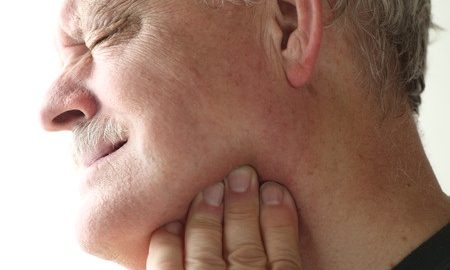Promising Advances in TMJ Treatment

The temporomandibular joint (TMJ) is a hinge joint that connects the jaw to the skull. It sits on either side of the face in front of each ear and disorders affecting the joint can be extremely distressing to patients. In a promising advance to TMJ treatment, scientists have succeeded in manipulating stem cells in mice to renew cartilage and repair the joint.
The TMJ allows people to chew, talk, and yawn. Problems with the joint itself or the muscles of the jaw can lead to TMJ disorders. Injuries, such as whiplash during a motor vehicle collision, can damage the joint. Arthritis, excessive clenching of the joint, and stress leading to a subconscious tightening of jaw muscles can all cause TMJ problems. Disorders of the TMJ are typically associated with severe pain in the jaw, neck, and shoulders, difficulty opening the mouth wide, tiredness, trouble chewing and talking, and swelling of the face. Other symptoms may include a toothache, headache, earache, dizziness, hearing problems and tinnitus (ringing in the ears).
Conventional treatments for TMJ include over-the-counter pain relieving drugs and the use of cold packs or moist heat packs. Patients are often forced to eat soft foods and avoid extreme jaw movements such as yawning, yelling, and singing. Relaxation with biofeedback and physical therapy may also help. A splint guard, dental work, and trigger point injections may be necessary for more severe cases. The last resort is usually arthroscopic or open joint surgery.
Currently available treatments for TMJ due to loss of cartilage address symptoms, but not the underlying cause of the disorder. Now, researchers at Columbia University Medical Center in New York have succeeded in repairing the degenerated TMJ cartilage of mice by transplanting a single stem cell. “This is exciting because available treatments for TMJ are very limited,” explains Mildred C. Embree of the Department of Dental Medicine at Columbia.
Stem cells are undifferentiated immature cells that can potentially convert to any type of tissue in the body. Manipulation of stem cells holds great promise in regenerative medicine where encouraging new cell growth is used to treat damaged or degenerated tissue.
The new technique overcomes the inherent risk in transplanting stem cells. The donor cells are perceived as foreign by the recipient’s immune system and rejected. The alternative approach employed by the Columbia researchers is to manipulate a stem cell already present in the area and induce it to repair damaged tissue.
The cartilage in the temporomandibular joint is similar to that found in the meniscus of the knee and between the vertebrae in the spine. This fibrocartilage, once damaged, cannot heal or regrow. Because it performs the important function of cushioning bones and preventing them from rubbing against one another, any damage to the cartilage results in symptoms that are often severe and debilitating, resulting in permanent disability.
Professor Embree and her colleagues have shown that the TMJ in mice harbors FCSCs (fibrocartilage stem cells) which can regenerate bone and cartilage. Transplantation of even a single FCSC into a live mouse can organize the microenvironment in the damaged joint and support the healing process. In addition, the FCSCs can be induced to differentiate by blocking overactive Wnt signals that disrupt the stability of these cells.
The findings suggest that new treatments for TMJ disorders as well as torn menisci in the knees and damaged vertebral cartilage in humans could be in the pipeline.
References:
- http://www.medicalnewstoday.com/articles/313395.php
- http://www.webmd.com/oral-health/guide/temporomandibular-disorders-tmd#1


